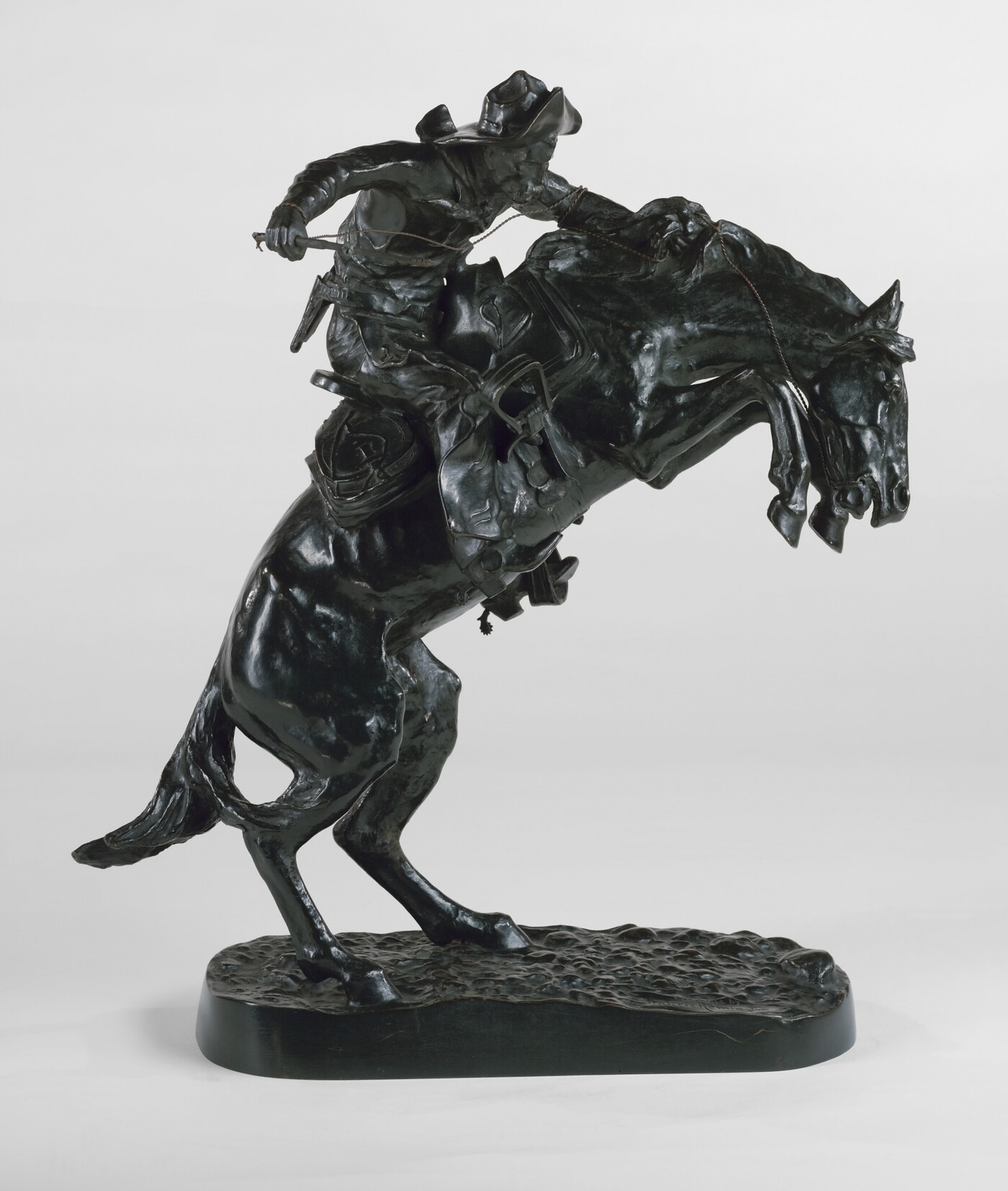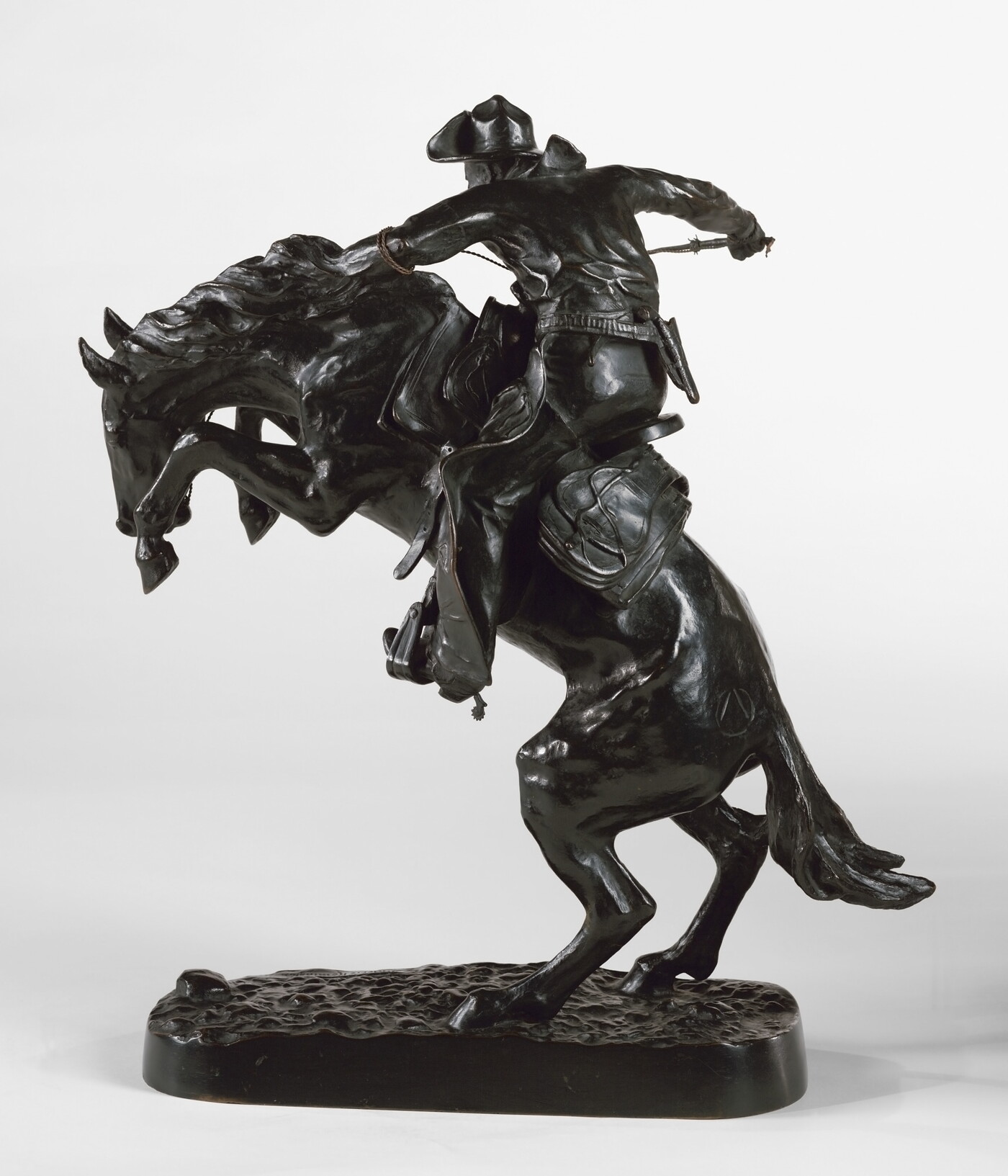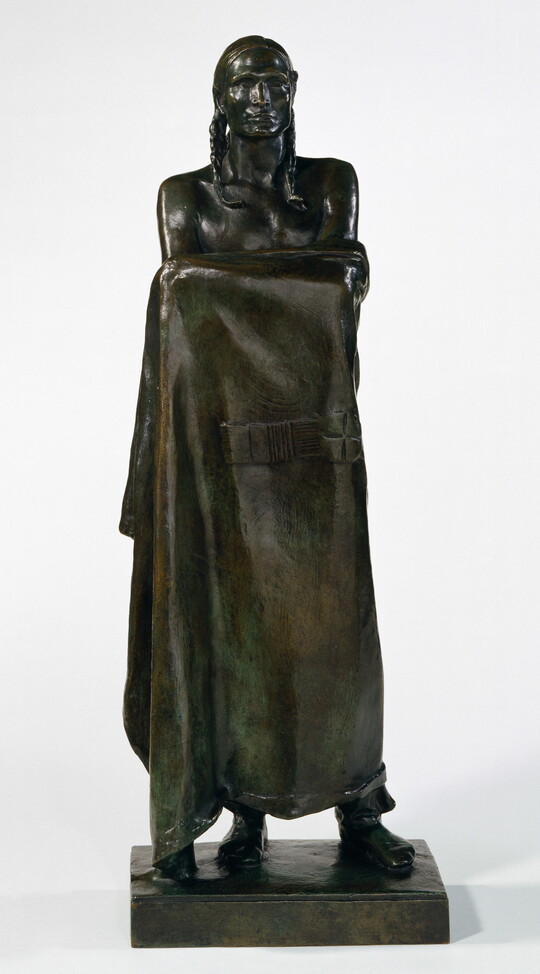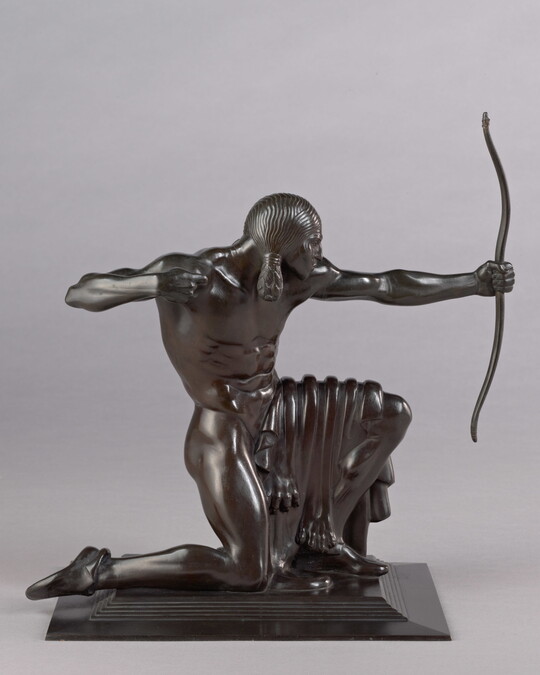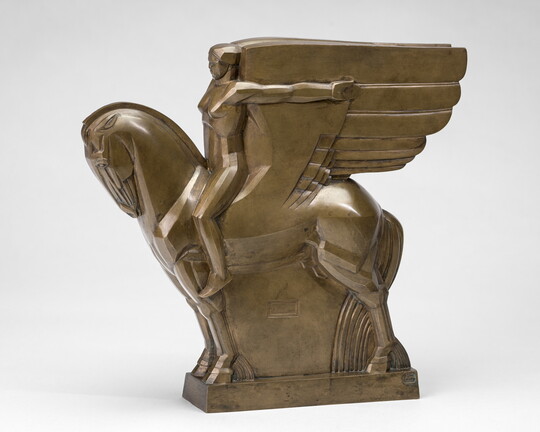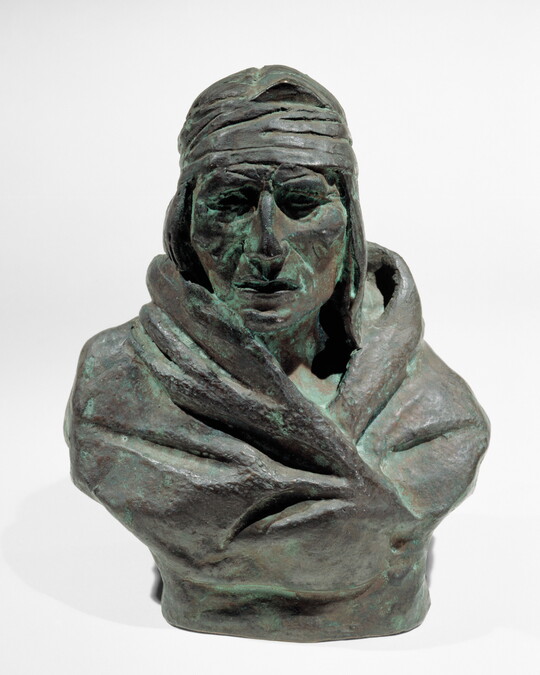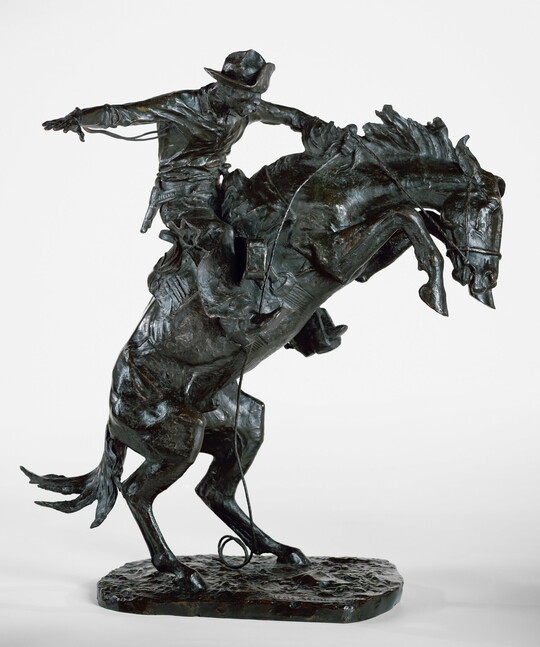
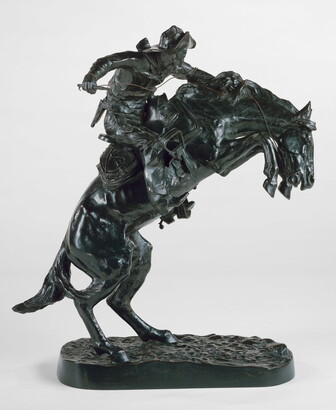
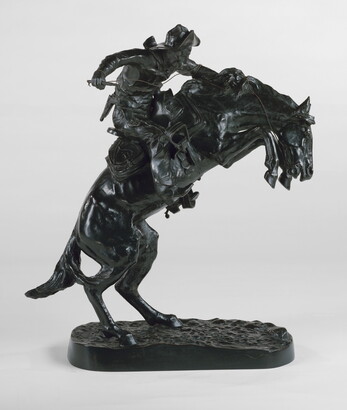

Artwork Images
Photo:
Controls
The Broncho Buster
Object Details
-
Date
1895, cast ca. 1920-1952
-
Object Type
Sculptures
-
Medium
Bronze
-
Object Format
Lost-wax casting
-
Dimensions
22 1/4 x 18 5/8 x 11 1/4 in.
-
Edition
unknown [unauthorized posthumous cast]
-
Inscriptions
On the base: Copyright by \ Frederic Remington
Foundry Mark:
On the base: ROMA[sic] BRONZE WORKS N.Y.
-
Collection Name
Amon G. Carter Collection
-
Credit Line
Amon Carter Museum of American Art, Fort Worth, Texas, Amon G. Carter Collection
-
Accession Number
1961.6
-
Copyright
Public domain
Additional details
Location: Off view
Part of:
Amon G. Carter Collection
See more by Frederic Remington
Tags
Video:
Video:
Video:
-
New York artist Frederic Remington gained national fame for creating scenes that memorialized the people and lifestyles of the American West. Per the suggestion of a friend, Remington began to sculpt and produced a small-scale version of The Broncho Buster in 1895. It wasn’t until 1909 when Remington made a large-scale version of it, which is on display at the Carter. The action and details of this piece make it one of the most loved and notable sculptures from that time.
This bronze sculpture, meant to be viewed from all sides, depicts a cowboy on the back of a rearing horse. The slender, bushy-mustached man looks straight ahead as he sits on the saddle. He’s wearing a cowboy hat with the front brim bent back; a long-sleeve collared, button-down shirt; a holster with a gun around his waist; pants covered by chaps; and boots with a tall heel. The rider’s left hand holds onto the reins at the base of the horse’s neck. That same hand holds on to an unraveled lasso, and the long, skinny rope drops down the right side of the horse and hits the ground, making a tiny loop that stands upright. His right arm is pulled up and back out to the side, and his hand is opened wide, palm down. Remington shows movement in the cowboy’s body by adding creases and ruffles across the arms and torso of his shirt. The rider bends forward slightly at the waist and softly bends his knees, balancing himself over the moving steed. His right foot is out of the stirrup and the empty stirrup flies to the side. The cowboy’s left foot is secure in the other stirrup. Under the saddle is a blanket and two half circle bags that rest over the back haunches of the horse. Remington included just as much detail and action for the horse.
The horse is rearing up, bending his hind legs while standing firmly on them. His front legs are parallel to each other, bent, lifted up high, and framing his head that looks to his right. His mouth is partially open, and the bit is visible on either side of his mouth. The horse’s nostrils flare, his ears are pinned back, and his mane stands on end, suggesting the horse is on his way back down from rearing. The back two hooves remain on the ground. The tail wisps off to the same side of the rider’s free arm, separated into four sections of hair, contributing to the sense of movement. The muscles on the horse are intricately articulated, reinforcing the movement even though the action is frozen.
The horse stands on a raised oval base. The top is extremely textured, giving the sense of standing on dirt. The artist carved his signature on the long side of the base in front of the right hind hoof.
Amon Carter Disclaimer
This information is published from the Carter's collection database. Updates and additions based on research and imaging activities are ongoing. The images, titles, and inscriptions are products of their time and are presented here as documentation, not as a reflection of the Carter’s values. If you have corrections or additional information about this object please email us to help us improve our records.
Every effort has been made to accurately determine the rights status of works and their images. Please email us if you have further information on the rights status of a work contrary or in addition to the information in our records.
Related Works
-
An American Stoic, 1912
Alexander Stirling Calder
Bronze
2002.4
-
Indian Hunter, 1914
Paul Manship
Bronze
1997.3.A
-
Study for a Monument to Walt Whitman, 1919-1920
John Bradley Storrs
Bronze
2001.1
-
Coming Through the Rye, 1902
Frederic Remington
Bronze
1961.23
-
Navajo, ca. 1902
Charles M. Russell
Bronze
1961.104
-
Indian Family [Male], 1915
Charles M. Russell
Bronze
1961.122
-
The Broncho Buster, 1909
Frederic Remington
Bronze
1961.4
-
Jim Bridger, 1926
Charles M. Russell
Bronze
1961.70
-
The Freedman, 1863
John Quincy Adams Ward
Bronze
2000.15

